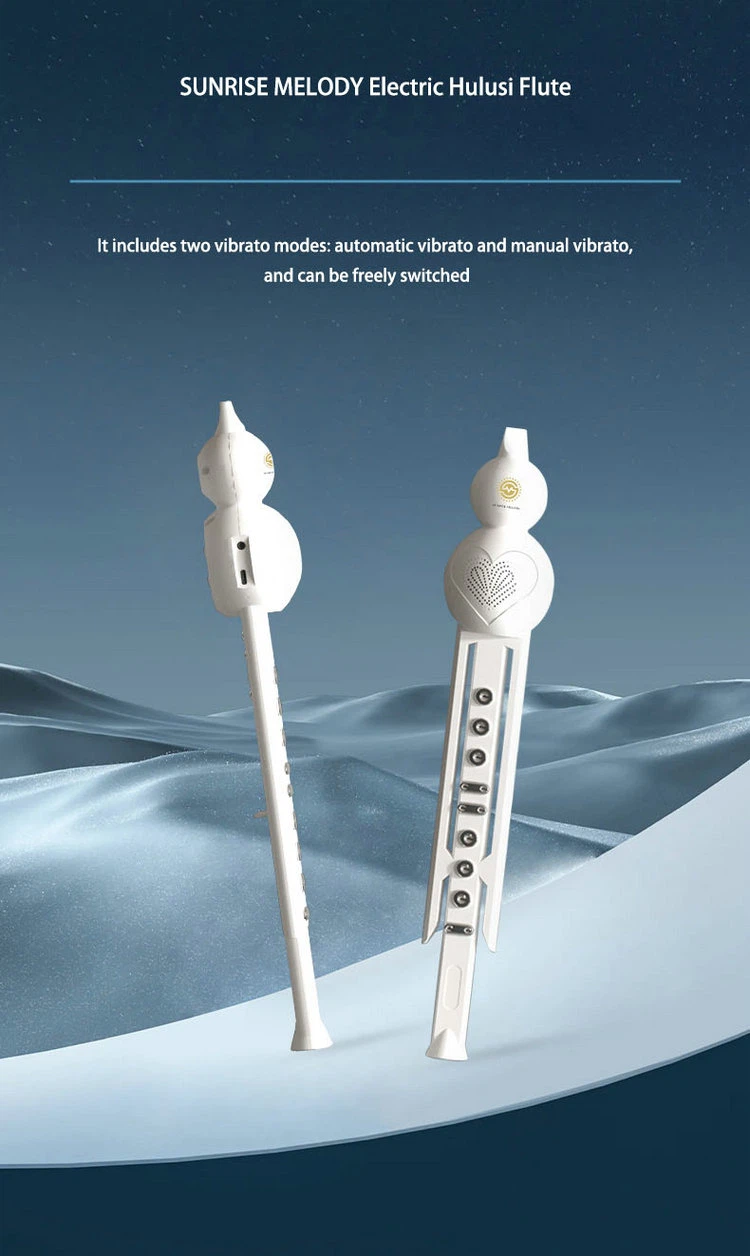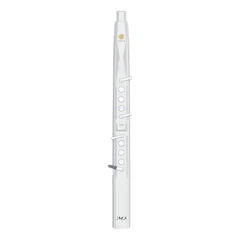Learning to play the Hulusi effectively is a journey that involves understanding the instrument's structure, mastering breath control, finger techniques, and immersing oneself in the cultural context of Chinese music. This comprehensive guide will take you through the process of learning the Hulusi from scratch, covering everything from choosing the right instrument to performing advanced pieces.
Introduction to the Hulusi: The Hulusi, also known as the Chinese gourd flute, is a traditional wind instrument with a unique construction that features a gourd resonator and bamboo pipes. Its warm, mellow sound has made it a favorite among musicians and audiences alike. The instrument is particularly popular among the ethnic minorities in Yunnan Province, China, where it is used in various cultural and ceremonial contexts.
Choosing the Right Hulusi: Selecting the appropriate Hulusi is the first step in your learning journey. Consider factors such as the instrument's size, material, and pitch. Common pitches include D, C, Bb, and A. The size and material should suit your physical comfort and playing style. For beginners, a medium-sized instrument made of quality bamboo with a gourd resonator is recommended.
Understanding the Hulusi's Anatomy: Familiarize yourself with the different parts of the Hulusi, including the gourd resonator, bamboo pipes, finger holes, and mouthpiece. Understanding the anatomy will help you maintain the instrument and improve your playing technique.
Proper Posture and Holding Techniques: Mastering the correct posture and holding techniques is crucial for comfortable and effective playing. Stand or sit with a straight back, feet shoulder-width apart, and hold the Hulusi at a 45-degree angle to your body. Ensure your fingers are relaxed and curved, gently covering the finger holes.
Breath Control and Embouchure: Breath control is fundamental to playing the Hulusi. Learn to use diaphragmatic breathing to support a steady and even airflow. The embouchure involves positioning your lips around the mouthpiece without causing the cheeks to bulge, ensuring a good seal for clear tone production.
Finger Techniques: Finger dexterity is essential for playing melodies on the Hulusi. Practice covering and uncovering the finger holes with precision to produce different pitches. Begin with simple scales and gradually progress to more complex melodies.
Articulation and Phrasing: Learn to articulate your music by clearly defining the start and end of each note. Practice different types of articulation, such as staccato and legato, to add expression to your playing.
Vibrato Technique: Vibrato adds warmth and depth to your sound. It is achieved by making small, rapid pitch variations on a single note. Practice applying vibrato to enhance the expressiveness of your music.
Dynamic Control: Dynamics refer to the variation in volume during playing. Learn to control the dynamics by modulating your breath pressure and embouchure to convey different emotions in your music.
Glissando and Slides: Glissando, or sliding from one pitch to another, can add a smooth and fluid quality to your music. Practice sliding between notes to create seamless transitions.
Mastering the Scale and Modes: Learn the pentatonic scale commonly used in Chinese music, which forms the basis for many traditional melodies. As you progress, explore other scales and modes to expand your musical vocabulary.
Advanced Techniques: Once you have mastered the basics, delve into advanced techniques such as double tonguing, triple tonguing, and various ornamentations. These techniques will help you play more complex pieces and add flair to your performances.
Music Theory and Sight-Reading: Understanding music theory will enhance your ability to learn and interpret music. Practice sight-reading to improve your ability to play written music without prior practice.
Practicing with Accompaniments: Play along with recordings or live accompaniments to develop your sense of timing and ensemble playing. This will also help you prepare for performances and improve your musicality.
Rehearsal and Performance Preparation: Regular practice is key to improvement. Set aside dedicated practice time and focus on specific aspects of your playing during each session. As you prepare for performances, work on building your stage presence and confidence.
Exploring Repertoire: Expand your repertoire by learning traditional Chinese pieces, folk songs, and contemporary compositions for the Hulusi. This will help you develop a well-rounded skill set and deepen your appreciation for the instrument's capabilities.
Recording and Self-Evaluation: Record your practice sessions to track your progress and identify areas for improvement. Listening to recordings of your playing can provide valuable insights into your technique and musical expression.
Participating in Ensembles and Performances: Joining ensembles or performing in public can provide valuable experience and exposure. It will also offer opportunities to learn from other musicians and receive feedback on your playing.
Continuing Education and Inspiration: Consider taking lessons from a Hulusi teacher or attending workshops to further your learning. Engage with the Hulusi community, listen to performances, and draw inspiration from other artists.
Maintaining Your Hulusi: Proper maintenance of your Hulusi is essential for its longevity and optimal performance. Clean the instrument regularly, store it in a protective case, and ensure it is kept in a suitable environment.
Conclusion: Learning to play the Hulusi is a journey that combines technical skill, musical understanding, and cultural appreciation. With dedication, patience, and consistent practice, you will find yourself immersed in the rich world of Chinese music, expressing yourself through the unique voice of the Hulusi.
This guide has provided a foundational understanding of the Hulusi and a structured approach to learning this beautiful instrument. As you progress in your musical journey, remember that the key to mastery lies in the joy of learning and the passion for making music.
SUNRISE MELODY Electric hulusi flute instrument
Chinese hulusi flute instrument has a unique ethnic style and is extremely ethnic.
And it has a good volume and 10 timbres, it is easy to learn and simple to use, especially suitable for beginners.
6 Major Core Selling Points, a variety of innovative functions to meet different performance needs:
10 kinds of timbres
Touchable octave
Connect headphones
Four fingerings
Built-in battery
Built-in speakers



